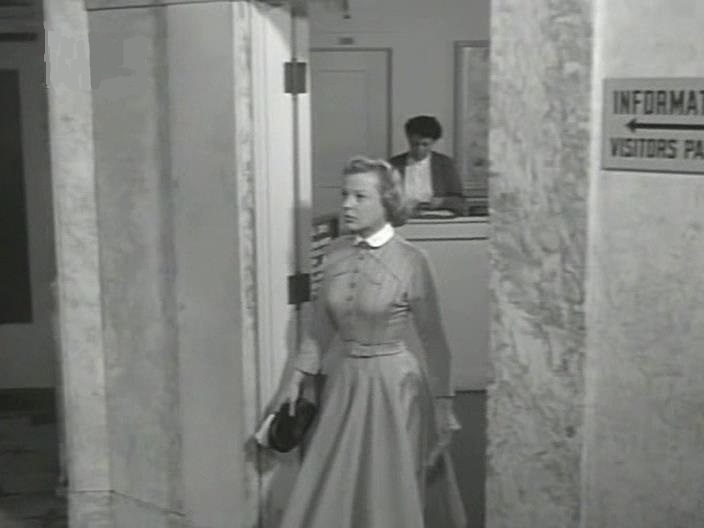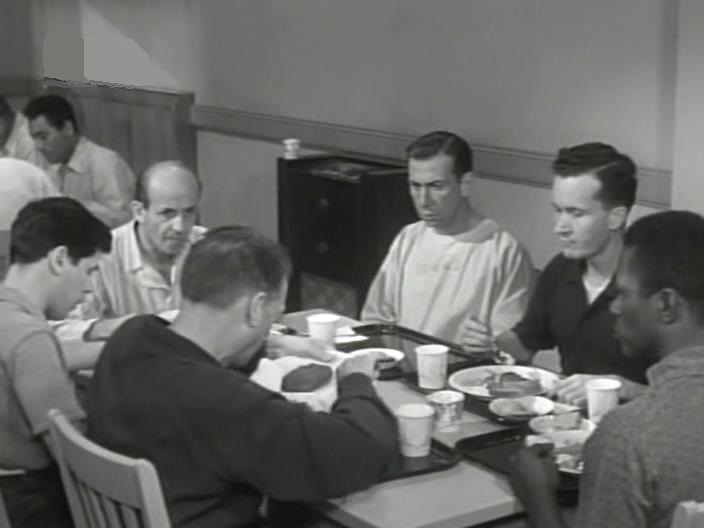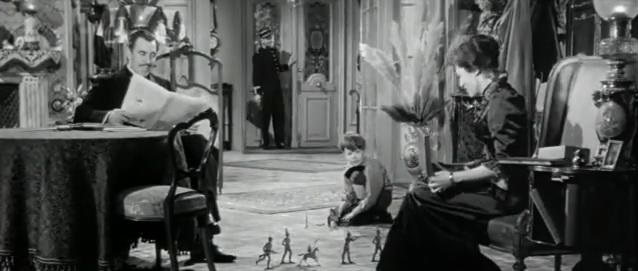The Shrike

The stage manager
and the understudy, a mésalliance
that nearly proves fatal and all but ends in a city psychiatric ward.
The
director’s studied resemblance to Bogart in this role is an inside joke
not too close to the vest, anyway.
The great
Hollywood star is a rival to her, she won’t go to London for spite,
meddles in the work, brings it down to nothing, holds trumps, the key
literally, in fine behaves exactly like everyone’s worst nightmare of a
critic, Ellsworth M. Toohey in King Vidor’s The Fountainhead.
This is as fine a
portrait as can be drawn. The film is properly varied in its resolution, a fact
complained of by reviewers.
A.H. Weiler of the New
York Times, “an uncommonly absorbing and provocative drama.”
Leonard Maltin, “almost succeeds”. Hal
Erickson (All Movie Guide),
“softening the misogynism of the original
play.” Halliwell’s Film Guide,
“of little interest”.

The Cockleshell Heroes
It just happens
to be the bloody gospel truth about the Bordeaux operation against
blockade-runners.
An extremely
capable director treats the Forbes & Maibaum
screenplay to a series of turns five or ten years ahead of the time, in color
and CinemaScope.
It has a unique
analysis of l’entre-deux-guerres
in Trevor Howard’s speech on the Great War and the director asleep at the
end of it. “Come along, hero.”
The curious
aspect of volunteering winds up in Wellman’s Lafayette Escadrille,
it’s a Marine who goes AWOL to paste his wife’s lover.
The depth charge
attack en route further suggests the new circumstances of the war.
The two-man craft
employed give the great metaphor, Flaherty’s Nanook of the North.
Enright’s Gung
Ho! is very much a tacit definition of the Royal
Marines, in the interviews before training but also in the disagreement over
the meaning of the term.
I Accuse!

“A brave
chapter in the history of France.”
The traitor Esterhazy, he needs money, Dreyfus must pay.
The rather
hopeless captain of artillery defended as a protégé and experiment whose desk
is something of a military position, nib and holder, inkpot, nib and holder,
inkpot, family photographs... nonplussed at his court-martial, soldiering on
after a fashion. Devil’s Island, “perhaps I’m dead and
don’t know it... each day is a century of silence that has to be
endured.”
The Esterhazy court-martial, “a secret file which no-one
can examine, a judge who refuses to admit evidence,” Clemenceau to Zola
in attendance.
The end of the
affair, Esterhazy’s confession to a London
publisher, for money.
A film of notable
precision in the acting, a firm basis of Ken Russell’s Prisoner of Honor. early days for such a
cast, six months after Kubrick’s Paths
of Glory, the significance not lost on Ferrer, who realizes the power of
the CinemaScope screen to convey half a dozen simultaneous performances or two
quite separately (cp. Some Came Running,
dir. Vincente Minnelli, later that year). The limpid reality of the thing, a
most ridiculous lie, all but palpable.
Nothing is more
eloquent, with Dieterle it’s Zola, Russell
brings the heroism of Picquart into view, Ferrer
observes Dreyfus as the central figure, the pivot of the affair, which after
the war had no doubt come to look prophetic. Elements of the theme certainly
figure in The Devils and Mahler...
Gore Vidal
screenplay, Freddie Young cinematography, William Alwyn
score.
The beauty of it,
a regular Othello, went by the boards
in Gotham, “Mr. Ferrer’s Dreyfus is a sad sack, a silent and colorless man who
takes his unjust conviction with but one outburst of protest and then endures
his Devil’s Island torment lying down. He is a chilly hero who stirs mere
intellectual sympathy,” thus
Bosley Crowther of the New York Times.
Variety, “strong,
if plodding, entertainment... Jose Ferrer takes on the heavy task of playing Dreyfus
and of directing. His performance is a wily, impeccable one, but it comes from
the intellect rather than the heart and rarely causes pity... The action is
throughout rather static.” Leonard Maltin, “sincere but
pretentious”. Time Out cants,
“runs through the facts, and only once or twice touches on the
ambiguities of the ‘Dreyfus Affair’ which made the infamous case,
for France at the end of the 19th century, a compelling national
tragedy.” Britmovie, “compelling film, perhaps intended as an allegory about the
McCarthy era... José Ferrer’s acting
demonstrates more technique than emotion.” Hal Erickson (All Movie Guide) has “the still-controversial
l’Affaire Dreyfus of the late
19th century... manages to make several allusions to America’s own
McCarthy-era ‘witch hunts’.”
Halliwell’s Film Guide,
“stolidly... unsuitably... tends to flounder”.

Return to Peyton Place
The horror of all
horrors, a Gotham publisher, expands the horizons of that Peyton Place High
School valedictorian and columnist on the Peyton Place Times at five
bucks a throw, she’s a celebrity with a
bestseller called Samuel’s Castle, which retails the events of
Robson’s Peyton Place.
It raises the
hoodoo in town, where mothers really are.
The nightmare
redoubled, expanded to the dizzying heights of New York fame, a small town whirl.
Directed with
sterling candor and bravery, most particularly in the climactic scene, where
the two biggest mothers (Eleanor Parker and Mary Astor) compete in talking
through their hats at a town meeting, as it were.
“Basically Return
to Peyton Place is a high-class soap opera,” Variety said,
“but it is the veteran Astor who walks off with the picture.”
It explains how
the amateur narrator of Robson’s film came to write so forcefully.
“Foreign
entanglements” are the key, correspondence from Gotham is “foreign
mail”, says the postman.